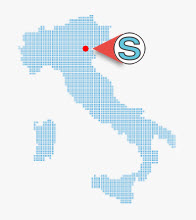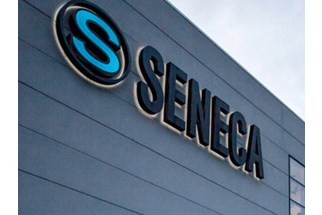Remote control and infrastructure management system
In recent years, the metropolitan city of Venice has made strategic investments in the technological upgrading of the subways it manages. The companies entrusted with the technological implementation identified Seneca, an Italian high-tech company with thirty years of experience in the production of data acquisition, interface, and control systems, as a partner. Seven municipalities are involved: Mira, Salzano, Quarto d'Altino, Musile di Piave, and San Donà di Piave, with more to come. The Seneca solution, in addition to supervising the correct functioning of electromechanical equipment by means of special sensors, is able to manage the operating status of pumps and accurately detect the water level, the status of traffic lights and generators and, in the near future, will also detect signals from IP surveillance cameras that can be integrated via VPN (Virtual Private Network). It also manages the sending of notification alarms to operations personnel and their subsequent archiving for consultation and auditing.

Salmasi road subway in the municipality of Musile di Piave, along the SP44 'Caposile-Musile'
Technological evolution
Before the implementation of the current system, subway inspections were carried out with the help of operators who fixedly had to go to the facility and carry out the required checks. From a fundamentally manual type of control, there was a shift in the 1990s to the use of telephone dialers to relay the alarms to fixed telephone numbers. In the 2000s, the first integrated remote controls with different alarms and SCADA systems were introduced. More recently, the innovation pursued by the Metropolitan City of Venice, thanks also to Seneca technology, has seen the implementation of a remote management and local/remote control system. The functions provided by the system include the detection of level probes, on the basis of which the logic for starting or stopping a pump can be decided, and the management of the number of pumps that can run at the same time, both under mains supply and with a generator set. All this is the result of an extremely painstaking project, the fruit of the knowledge and experience of the various parties involved: the technical managers of the lift systems of the Metropolitan City of Venice, the maintenance companies, and the technology supplier Seneca.
The new control panels for the subways were designed in a safe and redundant manner so that if, for some anomaly, the remote control system was inhibited from managing the start-up of the pumps, the electromechanical system with the floats would automatically start up. In practice, it is as if each control panel had a dual system to manage the system.

Example of control and command panel for subways with SENECA hardware and electromechanical redundancies.
The solution implemented in Venice
The heart of the Seneca solution is Z-PASS2-S, a perfect combination of the worlds of remote control and automation. It is an all-in-one RTU that concentrates I/O, control logic, and communication system in a single platform, based on the IEC 61131 programming standard (Straton) with Ethernet/3G+ router and support for secure communication via VPN. With numerous communication interfaces, the unit ensures high levels of connectivity with full support for industrial (Modbus RTU, Modbus TCP/IP) and ICT (HTTP, HTTPs, FTP, Smtp) protocols. The control logic implemented includes the management of lifting pumps based on the analog/digital levels detected in the subways, the activation of traffic lights in the event of flooding, of the generator in the event of a power failure, and the management of emergency procedures. The system also collects statistics on working hours and the number of pumps starts to adjust predictive maintenance plans. Rotary start-up of the pumps offers the advantage of even wear and tear with a relative extension of maintenance interventions. In addition to the Z-PASS2-S remote controller, there are a number of Z-PC Series Modbus I/O modules for each peripheral, capable of handling up to 34 digital inputs, ten digital outputs, and eight analog inputs. In terms of integration with other electrical and electromechanical components, such as pumps, sensors, traffic lights, and generators, present in the subways, the Seneca solution ensures maximum continuity and interoperability, as the remote control system ensures continuity of service and maximum integration even in existing installations. In any case, as far as field operation is concerned, the Seneca system is designed in such a way that any operator can be able to read the plant data. Access to the data is distributed over three operational figures: a maintenance technician, who can view the installations through the Scada; a technician on call from the Metropolitan City, who can view the installations and check their correct operation through the Scada; and an administrator, who can view the installations through the Scada, as well as remotely manage the installation and change its operating parameters. The solution also offers a redundant channel for acquiring historical data, meaning that data can be retrieved from the RTUs even if communication is lost for an extended period of time.

The architecture of the Seneca system for the remote management of subways based on VPN technology
For support activities, the maintenance company turns directly to SENECA, which provides qualified technicians and specialized know-how. It should be emphasized, however, that the system does not require complex maintenance plans, as the system as a whole has been designed and implemented to operate in an affidable manner with minimal field interventions.
The system is designed and implemented to operate in an affidable manner with minimal field interventions.
Communication and Supervision
The supervision application was realized with an innovative Scada, which uses the Html5 graphical interface and other technologies made available by Microsoft client, server, and embedded operating systems. The web solution integrated with Seneca hardware relies on Internet Information Service and other standard technologies such as SVG and JavaScript. The setting and visualization parameters accessible from the video pages include for each installation: the number of pump starts, pause and work times, flow rates, electrical consumption, commands and operating states, traffic light and generator status, and level measurement. The same parameters are associated with alarm events and dynamic trends. Alarm management provides for the acquisition, storage, acknowledgment, and sending of text messages to maintainers, on-call, and administrators. Definitely useful is the implementation of a 'patrol system', which allows a flexible management of alarms with the possibility of scheduling the sequence of reached operators in case some of them are not available. The Scada application is accessible via VPN Client Communicator. In essence, Seneca makes available on each client, desktop or mobile, a VPN network access tool coordinated by the centralized VPN BOX server. All this translates into the possibility of monitoring a given sub-passage (client) in real-time, verifying whether or not it is connected to the network and, therefore, whether it is in a state of possible maintenance or anomaly.

Synoptic subway monitoring real-time Scada
Benefits obtained
The benefits brought by the Seneca remote management system are of three types: technological, for the benefit of users, and for the managing body. In the first sphere are the continuous plant monitoring functions, real-time and mobile access, high levels of security and data protection with VPN technology, user recognisability, and extensive use of web servers with relative ease of access. To city users, traffico, and motorists, the system offers the highest standards of security, as each facility is constantly monitored. Suffice it to say that each site is monitored every 30 seconds and in the event of an anomaly, an alarm is immediately raised. To the operator, infinally, the Seneca solution allows him to know the status of the installations and to understand at any time if there are problems, providing decision support in critical situations. Knowing at what time the traffic light signaling the flooding of the subway, and therefore the prohibition of transit, was switched on or off is also essential in the event of investigations and legal disputes. The system also makes it possible to verifiy the effective execution of the pump rotation plan. There are also benefits in terms of preventive controls. In 50% of cases, anomalies are intercepted before they occur, for example, if a pump shows a high absorption compared to its power, the maintainer intervenes before irreversible damage occurs. With a simple contact installed on the doors of the technical room, it is then possible to control any unauthorized access, as well as supervise the activities of the maintenance company, or check at another entrance whether the buffer batteries of the traffic light system are discharged. From 2015 to 2017, on all the subways managed by the Metropolitan City of Venice, there was a significant reduction in emergency operations, with a total of only 18 emergency interventions in 2017, with a drastic reduction in travel costs for the various sites.


 EN
EN











